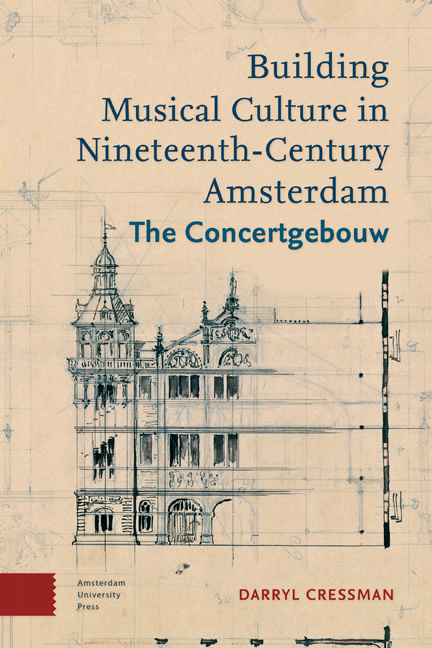Book contents
- Frontmatter
- Contents
- List of Illustrations
- Acknowledgements
- Dedication
- 1 The Concert Hall as a Medium of Musical Culture
- 2 Listening, Attentive Listening, and Musical Meaning
- 3 Patronage, Class, and Buildings for Music: Aristocratic Opera Houses and Bourgeois Concert Halls
- 4 Acoustic Architecture before Science : Designing the Sound of the Concertgebouw
- 5 Frisia Non Cantat: The Unmusicality of the Dutch
- 6 Listening to Media History
- Works Cited
- Index of Names
- Index of Subjects
1 - The Concert Hall as a Medium of Musical Culture
Published online by Cambridge University Press: 10 December 2020
- Frontmatter
- Contents
- List of Illustrations
- Acknowledgements
- Dedication
- 1 The Concert Hall as a Medium of Musical Culture
- 2 Listening, Attentive Listening, and Musical Meaning
- 3 Patronage, Class, and Buildings for Music: Aristocratic Opera Houses and Bourgeois Concert Halls
- 4 Acoustic Architecture before Science : Designing the Sound of the Concertgebouw
- 5 Frisia Non Cantat: The Unmusicality of the Dutch
- 6 Listening to Media History
- Works Cited
- Index of Names
- Index of Subjects
Summary
The Concertgebouw: ‘A Temple of Art’ or a Bar?
Opened in April 1888 and still in use today, Amsterdam's Concertgebouw (literally translated as ‘Concert Building’) is considered to be one of the three best concert halls in the world. It has excellent acoustics and is home to the Royal Concertgebouw Orchestra, which has been similarly lauded, receiving the title of best orchestra in the world in a poll of classical music critics conducted by the British magazine Gramophone in 2008.
These accolades are commendable for any city, but for Amsterdam they are especially remarkable. Throughout most of the nineteenth century Amsterdam was widely considered to be a second-rate musical city and despite the civilizing efforts of critics and patrons to remedy the city's musical shortcomings, it was difficult to convince Amsterdammers to take so-called serious music very seriously. Orchestras were undisciplined, and although many were proud of their city's musicians, this pride was more chauvinistic than based on actual musical merit. This was especially pronounced when foreign musicians would perform with the city's orchestras. Visiting in 1879 to direct his Third Symphony, Johannes Brahms politely complained that the musicians who made up the orchestra that he was charged with directing were ‘good people, but bad musicians’, and as he left he swore that he would return to Amsterdam only to eat and drink well. If Amsterdam's orchestras were mediocre, it could be argued that they were simply responding to their audiences. Amsterdammers were not very demanding and expected orchestral concerts to be gezellig, which loosely translates to ‘a pleasurable time being social with other people in a comfortable environment’. As such, talking, eating, drinking, and smoking with an orchestra playing in the background would be a desirable gezelligheid for many nineteenth-century Amsterdammers.
Given all of this, the notion that Amsterdam would one day be a capital of classical music culture was something only a few of the city's more ambitious patrons could imagine. For these patrons, the Concertgebouw was to be a valuable asset for elevating orchestras, audiences, and repertoires to the level of late nineteenth-century European musical capitals like Leipzig and Vienna. But this aspirational mission was not without its opponents.
- Type
- Chapter
- Information
- Building Musical Culture in Nineteenth-Century AmsterdamThe Concertgebouw, pp. 13 - 28Publisher: Amsterdam University PressPrint publication year: 2016



